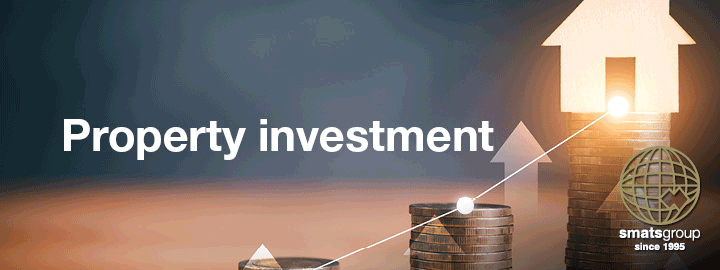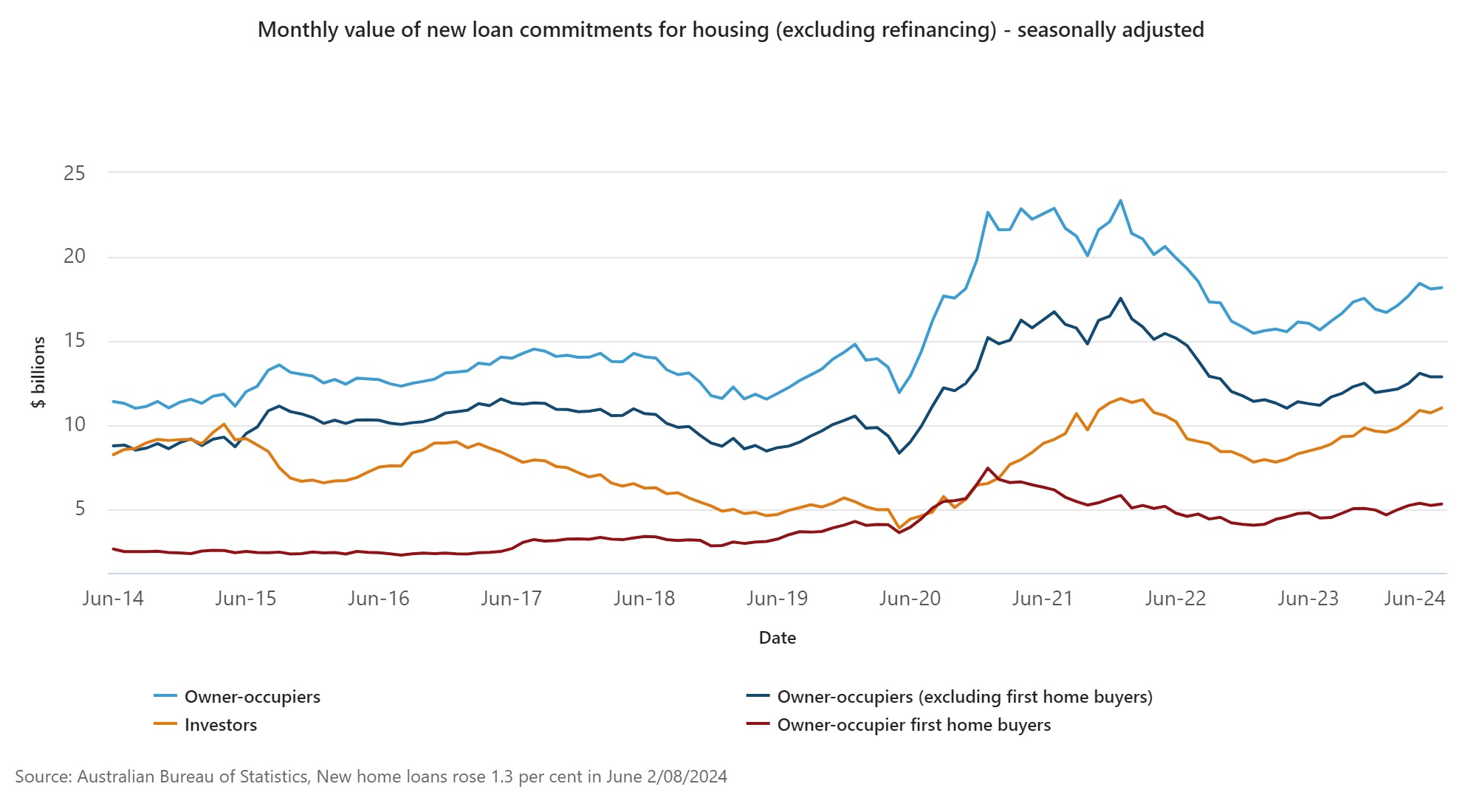Investors pour back into market as first home buyers squeezed out
Property investors continue to plunge back into the market, far outstripping the pace of new loan growth among owner-occupiers and first home buyers.
Investors are continuing their momentum-gathering return to the property market, outpacing the growth of owner-occupiers and first home buyers.
Over the last year, property investors have ignored higher interest rates, with the annual growth in the value of investor home loans rising 30 per cent in June from a year earlier.
Australian Bureau of Statistics (ABS) data released Friday (2 August) revealed that the value of new owner-occupier loans grew by 0.5 per cent to $18.2 billion in June, while the value of new investor loans jumped a hefty 2.7 to $11.0 billion during the month.
Over the year, the value of new investor loans surged 30.2 per cent, more than double that of owner-occupier loan values, which rose 13.2 per cent, The value of loans to first home buyers rose just 3.4 per cent from a year earlier.
Simon Arraj, founder and director of private credit investment manager Vado Private, said first home buyers were being priced out of the market but investors chasing capital growth were largely undeterred.
“While the cash rate has increased 4.25 percentage points since early 2022, investors are still investing heavily in bricks and mortar,” Mr Arraj said.
“Notwithstanding this, house prices could consolidate from their record levels, as the Australian economy slows and higher rates feed through the economy.”
Interest rates no barrier
Over the last 12 months, the national average has risen by $56,357, an increase of $154 a day, despite the fact the cash rate is at its highest level since November 2011.
The average new owner-occupier mortgage in Australia is now $636,597 – a new record high that is set to keep on rising alongside property prices in key states.
New South Wales is leading the nation in terms of loan sizes. Over the past 12 months, NSW continued to have the highest average loan sizes for both owner-occupiers and investors. In June, it rose to $780,000 for owner-occupiers and $818,000 for investors, compared to $636,600 across Australia, $604,300 in Victoria, Queensland’s $599,300, $545,800 in SA, $566,700 in WA and $467,500 in Tasmania.
RateCity.com.au’s Research Director, Sally Tindall, said the average new owner-occupier loan size has just hit another record high, as property prices in key capital cities continue to soar.
“Across the country, the average new owner-occupier mortgage has risen by $154 a day over the last 12 months, and on a 30-year mortgage you can basically double that figure when adding in interest costs,” she said.
“In Western Australia, the average new mortgage for an owner-occupier is now almost $100,000 more than it was just 12 months ago – rising by a gobsmacking $257 a day.
“It’s incredible to think this has unfolded under the weight of a rising cash rate.
“While there is seemingly no shortage of buyers prepared to up their bids at heated auctions in key capital cities, many would-be first home buyers have their hands tied by the double whammy of rising rates and property prices.”
The number of owner-occupier first home buyer mortgages, meanwhile, is stuck in neutral, clocking in at just 9,947 in the month of June.
“This figure has managed to lift above the 10,000 mark just once since the start of the rate hikes – a far cry from the most recent peak in first home buyer numbers recorded back in January 2021 when over 17,000 first home buyer mortgages were written for owner-occupiers,” Ms Tindall said.
The proportion of new and refinanced loans opting for a fixed rate clocked in at 2.6 per cent in the month of June. While this is just a fraction of what it was at the peak in July 2021, when 46 per cent of new and refinanced loans chose to go with a fixed rate, it is the highest level of fixing since September of last year.
Reflecting Australians’ love affair with property, recent data from the ABS reveals that household net wealth was a record $16.2 trillion in the March 2024 quarter, boosted by a record level of property assets of $11.0 trillion. As a proportion of household wealth, residential property comprises 67.9 per cent, up from 61.7 per cent in December 2020.
The key driver of household wealth gains in recent years has been rising property prices.
Housing Industry Association Economist, Maurice Tapang, the number of loans issued for the purchase and construction of a new home has been steadily increasing since the start of 2024, from a very low base.
“Market confidence appears to be stabilising following nine months without a change in interest rates.”
The number of loans issued for the purchase or construction of a new home increased by 9.2 per cent in the June quarter 2024 compared to the previous quarter.
“This quarterly increase was broad-based, with all states recording more loans issued for new homes in the June quarter 2024 than in the March quarter.
“This increase in lending is partially driven by a return of first home buyers to the market.
“The number of loans issued to first-home buyers in the June quarter 2024 was 5.8 per cent higher compared to the March quarter, which suggests building activity is at, or near, the trough in this cycle.”





















